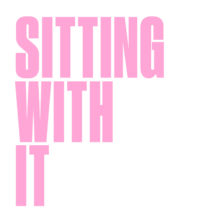Ways of losing oneself in an image. I – Tarrying with the feeling of being overwhelmed by the number of things … Aby Warburg.
At times fieldwork was overwhelming but also at times inherently boring. Days of drift, of nothing much happening, seeming ennui, seeming stuck in the claustrophobia of a small village surrounded by forest. Maybe not such a good idea to have Thomas Mann’s Magic Mountain as companion reading. The story of Hans Castrop’s isolation at Davos is nothing if not claustrophobic. Sit with it – it’s a good book. Sit with it – fieldwork will finish.
In the practice of Cognitive Behavioural Therapy, particularly as applied to the sufferers of OCD – that pernicious snarling wolf of an affliction that demands feeding with anxiety – sitting with it is a term that implies exposure – exposing yourself to the thing that is causing you anxiety. Sit with it.
Is that what we are doing as viewers of images? Exposing ourselves? Sitting with it? Surely that is the work of the artist; exposing themselves to the world – anxiety making if nothing else. But what are we, the viewer, the audience doing sitting with it? What is our own exposure – is sitting with it cause (of anxiety) or resolution.
Warburg provides a clue. Sitting with a work of art is an inherently risky proposition. It is a way of losing oneself. Whereas exposure therapy asks us to confront the Wolf of anxiety, sitting with an art work risks being overwhelmed. Sit too long, tarry a while and lose oneself. The project becomes one of madness – or more precisely – as Holly suggests – a form of melancholia. Sit with it.
Is that what sitting with art means? The attempt at capture is an attempt to find the thing / object that is / was lost. That loss is always melancholic. It is also true of anthropology. Marilyn Strathern suggests that there are always two fields. The field of fieldwork and the field of the study. The first is anticipatory, not knowing (and even not even knowing about not knowing), but being open to the social relationships that people allow you to have with them. The field of the study can be equally surprising but that too is tinged with melancholia – writing backwards. As with the art historian the attempt is in capturing something lost. Sit with it.
The problem I have with the subject of my work – masquerade – is that it never sits still. Always moving, its declaration is to avoid the gaze (of the art historian, the anthropologist, the audience). It is transient, interstitial, miraculous – never still. Putting this into writing is a loss; an attempt to stop, freeze even kill the movement. Stay still – never.
So – what do we come to? Sit still? Or sit with it? Maybe not. Come down from the mountain . Move, expose yourself, choose life. etc etc. Perhaps the best advice comes from the poet Lawrence Ferlinghetti – the motto of Madness – ‘F**k Art, Let’s Dance!’.
Dr Will Rea, Senior Lecturer
School of Fine Art, History of Art and Cultural Studies
